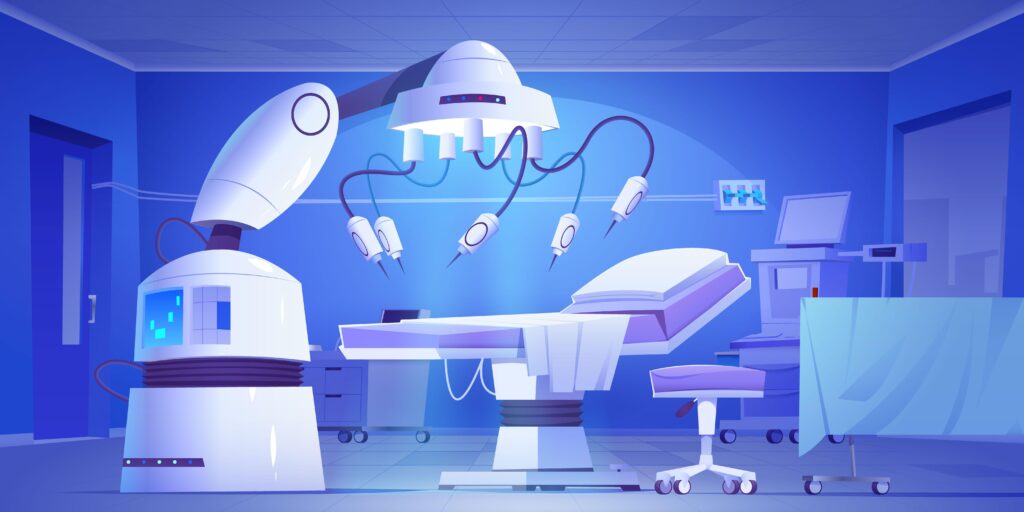
The idea of robots performing surgery might have seemed like science fiction a few decades ago, but today it is a reality transforming modern healthcare. Across the world, hospitals are increasingly adopting robotic surgical systems to perform precise, minimally invasive procedures that improve patient outcomes and reduce recovery times.
In this blog, we explore how robots operate on patients, their benefits, current limitations, and what the future holds for robotic surgery.
Robotic surgery, also known as robot-assisted surgery, involves the use of advanced robotic systems controlled by a surgeon. Unlike traditional surgery, where the doctor uses their hands directly, in robotic surgery the surgeon operates from a console, controlling robotic arms that hold surgical tools with exceptional precision.
The most widely used system today is the da Vinci Surgical System, which is approved for a wide range of procedures, including:
Here’s how the typical robotic-assisted surgical procedure works:
Robotic systems offer a wide range of advantages over traditional open or even laparoscopic surgery:
While robotic surgery is revolutionary, it comes with some limitations:
The field is advancing rapidly with AI integration, machine learning, and autonomous robotic systems on the horizon. Companies are developing robots that can perform tasks independently, assist in diagnostics, and learn from data to make better surgical decisions.
Soon, we may see remote robotic surgery, where specialists perform operations from thousands of miles away using 5G and ultra-low latency networks. This could revolutionize access to quality healthcare in underserved regions.
Robots operating on patients are no longer a futuristic concept—they are part of the cutting-edge medical technology reshaping healthcare. With benefits like precision, safety, and faster recovery, robotic-assisted surgery is providing patients with better outcomes and doctors with powerful tools to deliver exceptional care.
As innovation continues, robotic surgery will likely become more common, affordable, and intelligent, bringing us closer to a future where surgery is safer, smarter, and more effective than ever before.